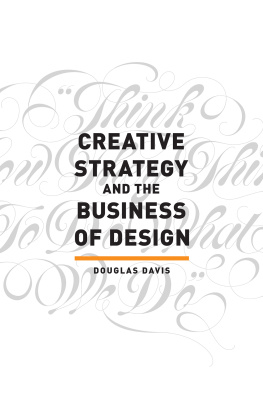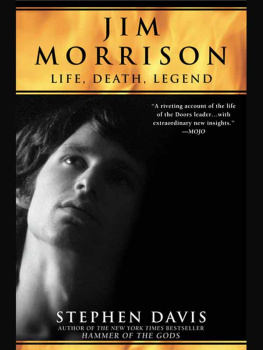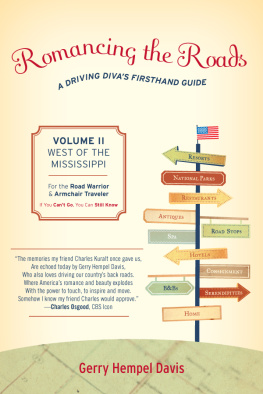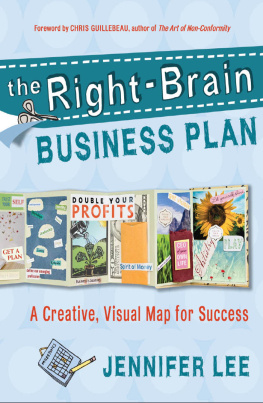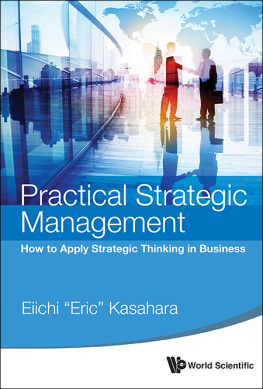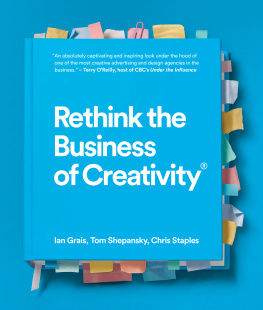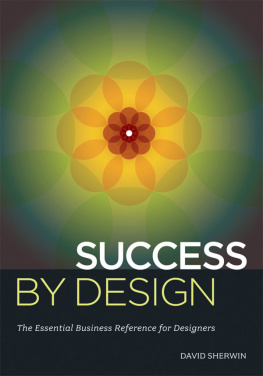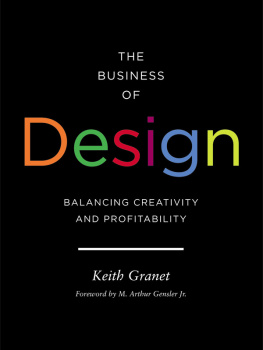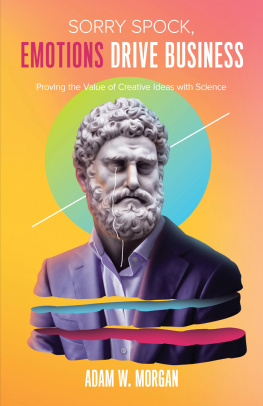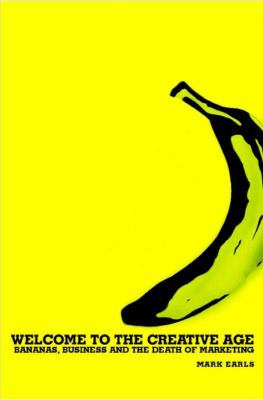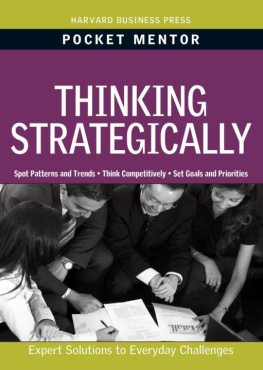Contents
Guide
CREATIVE
STRATEGY
AND THE
BUSINESS
OF DESIGN
DOUGLAS DAVIS

Douglas Davis
This is your brain on strategy in custom Spencerian script. It's a beautiful mind. thinkhowtheythink.com
CONTENTS
PART I | A Designer Caught in the Headlights:
Creative Business Solutions
CHAPTER 1 Welcome to the Other Side of the Brain:
Business Concepts Creatives Should Understand
CHAPTER 2 Emerging from the Cocoon:
The Benefits of a Strategic Approach
CHAPTER 3 What They Say versus What We Hear:
Translating Client Requests
PART II | Finding Inspiration in Order:
Gathering and Organizing Information
CHAPTER 4 You Talkin to Me?:
Reaching Your Target on Behalf of the Brand
CHAPTER 5 The Cord-Cutter Struggle:
Understanding Features, Benefits, and Values
CHAPTER 6 Think How They Think to Do What We Do:
Implementing the Creative Strategy Framework
CHAPTER 7 Getting Knee Deep:
The Advanced Strategy Session
CHAPTER 8 Finding the Gold: Turning Data and Insights
Into Creative Business Solutions
PART III | The Strategy Behind the Execution:
Developing and Presenting Your Work
CHAPTER 9 Beyond Make It Pretty:
Positioning, Pitching, and Leading the Client
CHAPTER 10 Wheres the Map?:
11 Questions a Creative Brief Should Answer
CHAPTER 11 Matchmaking:
Aligning Target, Channel, and Messages
CHAPTER 12 Sell Without Selling:
Preparing Yourself to Present
PART IV | Stayin Alive: Building
a Successful Career
CHAPTER 13 How to Take a Punch in the Face:
7 Tips for Surviving As a Creative
CHAPTER 14 Dragon Slaying:
Successfully Managing Fear
CHAPTER 15 Portfolios Are Like Cartons of Milk:
Word Problems from Relevant Practitioners
Its been said that a picture is worth a thousand words. In the hands of the right designer, a word is worth a thousand pictures.
TONY DI SPIGNA,
Typographer and Distinguished Professor
FOREWORD BY DR. MARJORIE KALTER
In Creative Strategy and the Business of Design, Douglas Davis provides creativesdesigners, art directors, copywriters, and content providerswith a framework for their concepts to succeed. This higher level of success entails understanding and achieving the business objectives of the design project. As he writes in the Introduction, Lets start with what we werent taught. With this book, designers have a guide that fills in gaps for skills that arent the subject matter of design school or the focus of internships, freelance work, or company training programs. Thats because these skills havent been considered essential or even appropriate for a creative role.
Awards for advertising effectiveness used to be rare; daily, weekly, and monthly measurement of a campaigns achievement of its goals used to be the purview of direct marketers. But that was the past. The proliferation of data has made it a possibility as well as a responsibility for every professional in the field of marketing communications to understand how business goals are set and how they are measured. With the growth of digital marketing, social media, and the technology for data collection, management, and analysis, data can and should be part of the brief for every campaign. Chief Marketing Officers, brand managers, product managers, and entrepreneurs have dashboards on their laptops and tablets to track quantitative campaign response and qualitative trend data. Market research to elicit survey data can be conducted online. Consumer and even business-to-business response through social media is immediatesometimes its so rapid and dramatic that new or incremental design work is needed
right away.
It is no longer sufficient for a campaign to be a big idea that generates awareness. To be successful, it has to be on strategy, trend positively with its target audience, and meet the projected metrics. When the design-school approach isnt matched by keen attention to the business goals, the campaign is at risk. The business may also be at risk.
One of my keenest memories of this is an agency presentation to AT&T. The clients were looking forward to seeing concepts to launch a loyalty program, and the agency was well prepared to show the first round of communications, which would use postal mail to reach the target audience. In the preceding days, account management, strategy, and production had met with creative to review and narrow down the concepts. The group selected three for presentation at the meeting. All three were on strategy for the brand and the campaign, had powerful graphics and messaging, and fulfilled all elements of the creative brief, including cost for production. What could go wrong? In the client conference room, the atmosphere was good. As the senior executive and account director leading the meeting, I was pleased. There was every reason to believe that we would get approval to proceed. At that point, the creative director suddenly stood up and announced that it was too soon to make a decision. He had a surprise, something more he wanted to show. (Whatever your professional stage, Im sure you will agree that when your team is presenting, there should not be anything presented that is a surprise to anyone on your team.) So when the creative director went on to assert Youre going to love this new concept. I love it, I saw the meeting, the launch, and the business sliding away, as though the conference table had been tipped at a sharp angle. The surprise concept was a tiny envelopea very tiny envelope. The designer hoped the diminutive size would break the clutter and get noticed in the mailbox.
Its a joke, right? asked one of the clients tactfully. Her colleagues were more pointed, expressing alarm that the agency would present a concept requiring special, costly print production and not meeting postal specifications for mailing. The meeting ended quickly. There were no further surprises: they did not approve any of the concepts that day. We kept the business, but not the creative director. In an experience like this meeting, one might want to defend the concept and argue for a way to overcome cost, production, or delivery barriers for a breakthrough design. The point of a book like this is that if a concept merits innovation, disruption, or change, you can and should be prepared to lead the discussion about why and how it would be feasible. The creative director was not prepared to do that. He hadnt considered any of those issues; his recommendation was based on subjectivity: I love it. Subjectivity is not a compelling rationale for a business decision.
As Douglas Davis shows, the designer needs to understand more than design, to know all she or he can about the brand or organization, the target audience, the marketing strategy and goals, and the business itself. With his perspective as designer and teacher, he is able to bridge these elements. In my own dual-career path, as a professor who became a marketer and then became a professor (again), I saw the value that my experience as an advertising executive brought to the classroom, and I saw that what isunfortunately and inappropriatelytermed real-world experience has even more value as social media continues to transform marketing. In the immediacy and transparency of virtual conversations and image-driven content, the marketer who has both theory and practical knowledge is prepared to evaluate the relative qualitative and quantitative cost and gain of a campaign or an Instagram posting.

